
 Data Structure
Data Structure Networking
Networking RDBMS
RDBMS Operating System
Operating System Java
Java MS Excel
MS Excel iOS
iOS HTML
HTML CSS
CSS Android
Android Python
Python C Programming
C Programming C++
C++ C#
C# MongoDB
MongoDB MySQL
MySQL Javascript
Javascript PHP
PHP
- Selected Reading
- UPSC IAS Exams Notes
- Developer's Best Practices
- Questions and Answers
- Effective Resume Writing
- HR Interview Questions
- Computer Glossary
- Who is Who
Electrical Substation – Types and Components
In electrical power systems, electric power is generated, transmitted, and distributed in the form of alternating current.
The electrical power is generated at a power generating station which is located far away from the consumer's load. The generated power is then transmitted and distributed through an electrical network to the load ends.
But it is also important to note that power is generated at a lower voltage, transmitted at a higher voltage, and distributed at a lower voltage again. This voltage variation is for many technical and economic reasons. For changing this voltage at many locations in the power system, an arrangement of various electrical equipment is used which is known as a substation.
In this article, we will learn about the following -
- Introduction to substations
- Components of substations
- Classification of substations
So, let's start with the first topic of consideration i.e., introduction to substations.
What is a Substation?
A substation is a systematic arrangement of electrical equipment like transformers, circuit breakers, isolators, and more, which is designed and developed to change some electrical parameters like current, voltage, frequency, etc. of the electrical supply.
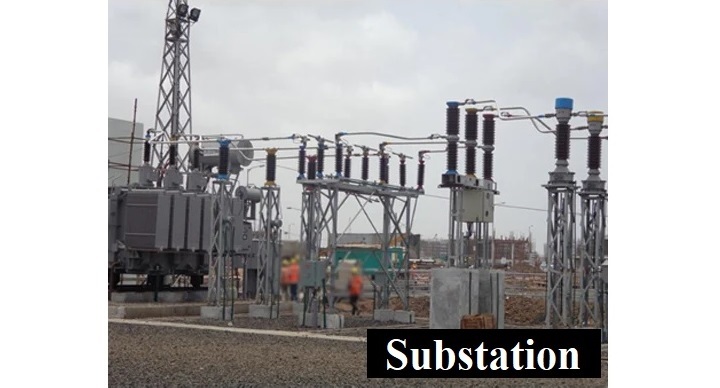
In an electrical power system, a substation is one of the most important parts. Because, a substation ensures a reliable and continuous supply of electricity.
While designing and erecting a substation, we must take care of the following points -
- It should be located at the center of gravity of load.
- It should have safe and reliable design and construction.
- It should be easy to maintain and operate.
- It should have minimum initial cost.
In practice, if we observe a substation, we can see that the main role of a substation is to change the voltage of the electric supply. Therefore, electrical substations play a vital role in electrical power transmission and distribution applications.
Components of Electrical Substation
As defined, an electrical substation is nothing but a systematic arrangement of various electrical components. This section will explain all these components of a substation along with their function.
Power Transformer
A power transformer is a type of electrical transformer which is used for changing the voltage and current level of the main electrical supply in the grid.
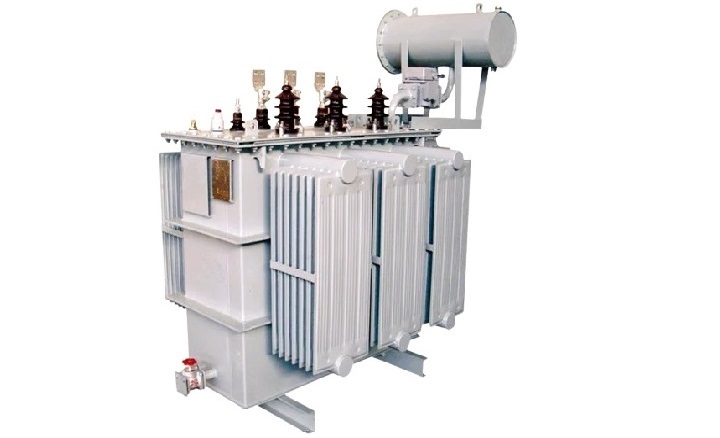
Depending on the function, it can be a step-up power transformer or a step-down power transformer.
Circuit Breakers
A circuit breaker is an electrical switch device used for turning on and off the electrical power supply in the power system. It is also used to isolate and protect the circuit in case of a fault in the system.
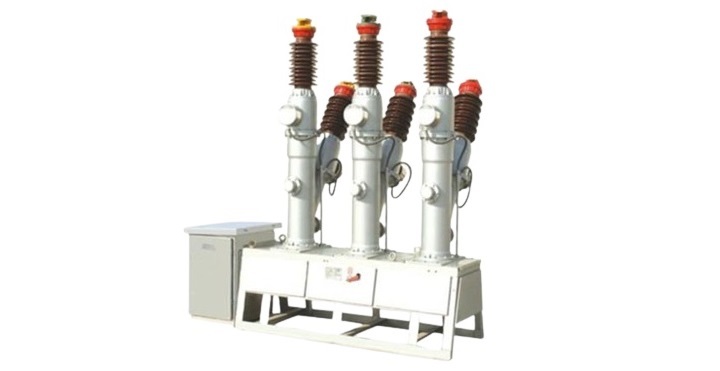
A substation can have different kinds of circuit breakers such as air-break circuit breaker, air-blast circuit breaker, oil circuit breaker, vacuum circuit breaker, and $\mathrm{SF_6}$ circuit breaker.
The main purpose of a circuit breaker in a substation is to switch the power supply in the electrical grid.
Current Transformer
Current Transformer or CT is a type of instrument transformer used in substations for measurement and protection purposes. It is basically a type of voltage step-up and current step-down transformer.
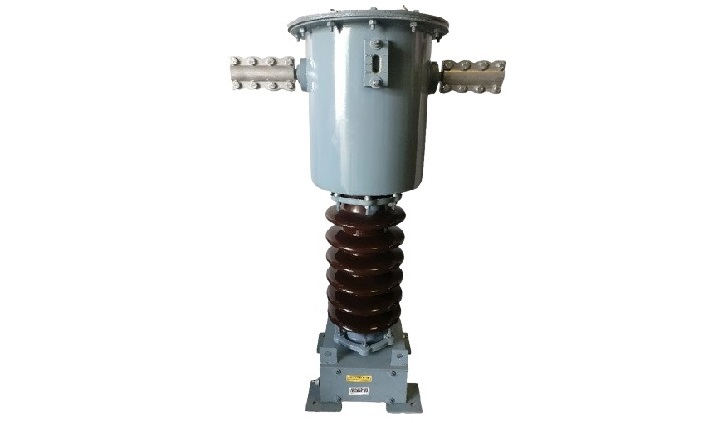
In a substation, the CT is used to perform the following two operations -
Metering CT - It is used to measure the current flowing in the system or power lines. The output winding of the metering CT is connected to an ammeter.
Protection CT - It is used to actuate a protective relay to operate the circuit breaker when a fault occurs in the system. Thus, the output winding of the protective CT is connected to a relay.
Here, it is important to note that the current transformer is always connected in series with power line whose current is to be measured.
Potential Transformer
A potential transformer or PT is also a type of instrument transformer used for measurement and protection applications. A potential transformer is nothing but a type of voltage step-down and current step-up transformer which reduces the high supply voltage to a low value that can be supplied to a voltmeter or a relay.
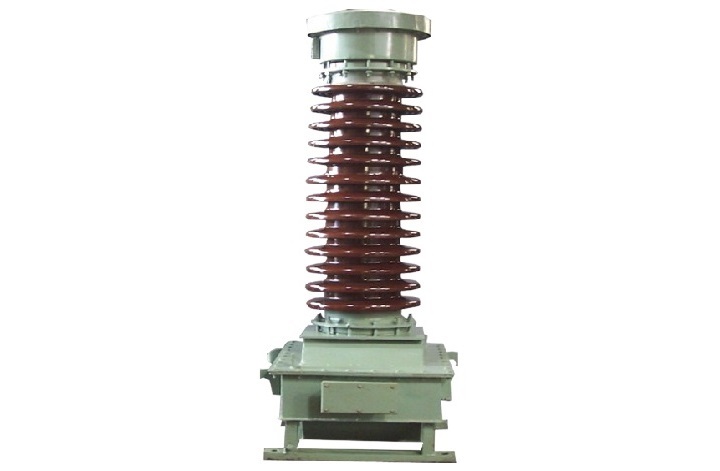
A potential transformer is always connected in parallel with the power line whose voltage is to be reduced and measured.
Lightning Arrestor
A lightning arrestor or LA is a protective device used in substations to protect the expensive equipment like transformers and circuit breakers from high voltage surges and spikes.

In an electrical power system, the high voltage surges can be caused due to lightning, switching, or any other abnormality.
The lightning arrestors are connected before the equipment to be protected. So that when a voltage surge comes, the LA grounds it and protect the equipment.
Isolator
An isolator is nothing but an electrical switch used in substations to provide an extra layer of isolation and safety in the electrical system. It is also known as disconnector.
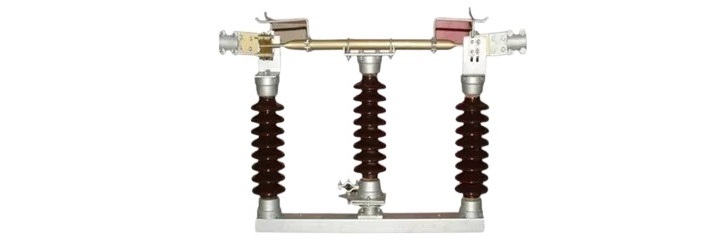
An isolator is basically a zero-power device which means it must be operated only under no load condition. Thus, before operating an isolator, the substation operator must switch the power supply in the grid.
It is to be noted that an isolator does not any kind protection to the system, but it just provides switching facility.
Bus Bar
In a substation, the busbar is the main conductor that connects all the power lines operating at the same voltage. It is a common electrical conductor that directly connected to multiple lines operating at the same voltage level.
A bus-bar can be a copper or aluminum conductor bar, generally having a rectangular cross section and operates at a constant voltage.
Busbar is used for connecting incoming and outgoing power lines in a substation. Therefore, a busbar serves as a link between the source and substation and between the substation and load.
In a substation, we generally use the following types of busbars arrangements -
- Single busbar arrangement
- Single busbar arrangement with sectionalization
- Double busbar arrangement
Insulators
Insulators are used in a substation to separate the live parts from the human touchable parts electrically.
In a substation, the insulators serve the following two purposes -
- Provide mechanical support to conductors and busbars.
- Prevent the leakage of current and confine the current to the conductor only.
Insulators are most commonly made up of porcelain. However, many other materials like polymer, glass, etc. can also be used to make insulators.
In a typical substation, different types of insulators are used such as post insulator, pin insulator, disc insulator, suspension type insulator, etc. These insulators are used depending on the service requirement like a post insulator is used to install a busbar.
Metering and Indicating Instruments
These are the instruments used in a substation to monitor the electrical parameters of the system like voltage, current, power, power factor, etc. These instruments include voltmeter, ammeter, wattmeter, energy meter, power factor meter, etc.
Miscellaneous Equipment
In addition to the above-mentioned main equipment, a substation can also have several other equipment such as,
- Fuses
- Earthing system
- Carrier current equipment
- Wave trap
- Substation auxiliary power supply
- Capacitor bank
- Reactors, etc.
Classification of Substations
Substations can be classified into different types depending on the basis of classification. Some major classifications of substations are given below -
Types of Substations According to Service Requirement
- Generating substations
- Transformer substations
- Switching substations
- Power factor correction substations
- Frequency changer substations
- Converting substations
Types of Substations Based on Construction
- Indoor substations
- Outdoor substations
- Underground substations
- Pole-mounted substations
Let us discuss about each type of substation in detail.
Generating Substations
Those substations which are located in a power generating station for switching and voltage step-up applications are called generating substations.
These substations receive power from the electrical generators at a lower voltage and sends it to a transmission line at a higher voltage. A generating substation has main components including step-up transformers, circuit breakers, CT, PT, isolators, capacitor banks, and many other auxiliary equipment.
Transformer Substations
Substations designed for changing the voltage level of electrical supply are called transformer substations. In these substations, a step-up or step-down transformer is the main component.
Therefore, a transformer substation receives electric power at some voltage and sends it forward at a different voltage. Most substations that we see around are the transformer substations.
Switching Substations
Switching substations are also known as switchyards. These are substations that do not change the voltage levels but perform only switching operations of electric supply.
Therefore, in switching substations the voltage level of incoming and outgoing power supplies is the same.
Power Factor Correction Substations
Substations which are designed for improving the power factor of the electric supply are called power factor correction substations.
These substations are generally installed at the receiving end of the transmission lines. In these substations, the capacitor banks or synchronous condensers are the main functional components.
Frequency Changer Substations
Electrical substations that are designed to change the supply frequency are called frequency changer substations.
The main component of a frequency changer substation is a frequency converter which can be an electronic or electromechanical device.
These substations are generally used for connecting two electric grids operating at different frequency levels.
Converting Substations
Electrical substations which are designed for changing the alternating current supply into direct current supply and vice-versa are known as converting substations.
The main components of converting substations are rectifiers (to converter ac into dc) and inverters (to converter dc into ac). These substations are generally located at the sending and receiving ends of the HVDC power lines.
Indoor Substations
A substation which completely setup inside a building is known as an indoor substation.
Because of several technical and economic reasons, indoor substations are designed for voltages up to 11 kV. However, if the atmosphere of the substation site is impure or contaminated, then these substations can be erected for voltages up to 66 kV.
Outdoor Substations
When the equipment of a substation like transformers, circuit breakers, isolators, etc. are erected in the open/outdoor environment, rather than inside a building, then it is called an outdoor substation.
These substations can be erected for any voltage level. Since, these substations do not require much civil work, hence, they are more economical to install.
Underground Substations
An underground substation is a type of substation whose all functionality is built below the ground. This type of substations is generally erected in highly populated areas where no space is available for equipment installation and building construction as well as the cost of land is very high.
The size of underground substations is generally kept as minimum as possible and the transformers used are of air-cooled type, rather than oil cooled.
Pole Mounted Substations
Pole mounted substations are generally used for distribution purposes. These substations have a H-pole with all the necessary equipment such as transformer, fuses, and circuit breakers installed on it. These substations are generally used for voltages up to 33 kV. The most significant advantage of pole mounted substations is that they are cheapest type of substations.
So, this is all about classification of electrical substations. Let's now conclude this article.
Conclusion
In this article, we explained the basics of electrical substations, the main equipment used in substations, and different types of substations.
An electrical substation is a systematic arrangement of electrical equipment like transformers, circuit breakers, isolators, conductors, etc. that can be used for voltage transformation or switching of electric power.
A substation is one of the crucial parts of a power system as it provides an efficient way of controlling the electrical power.
FAQs Related to Electrical Substations
The following are some commonly asked questions and their answers related to electrical substations.
1. Why is it called a substation?
It is called a substation because it does not have its own source of electric power such as an alternator. Instead, it receives electrical power from a generating station, hence it is considered a sub-part of the generating station, and called as a substation.
2. What is the difference between a transformer and a substation?
A transformer is an electrical component used in substations for voltage transformation, whereas a substation is an arrangement of various electrical components for switching and transformation of electric power.
3. What are the three main parts of a substation?
A typical substation has the following three main parts -
- Transformer
- Circuit breaker
- Isolator
4. What is an 11kV substation?
An 11kV substation is a substation that receive electrical power at some voltage level and delivers it to further at 11 kV.
5. What are the 4 functions of a substation?
The 4 main functions of a substation are given as follows -
- Change the supply voltage from one level to another.
- Switch the electric power in power lines.
- Measure the electrical parameters like current, voltage, power, energy, power factor, etc. in the system.
- Improve the power factor of the system.

